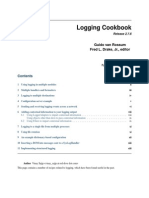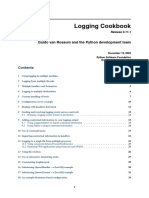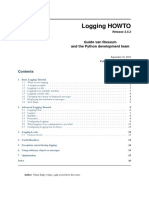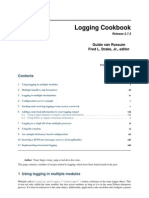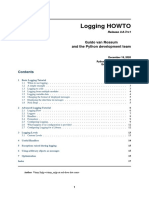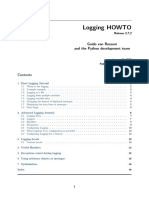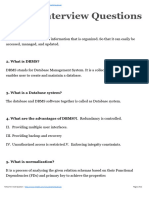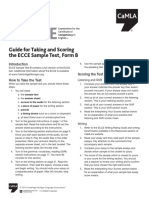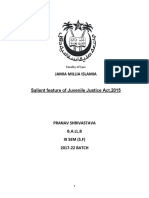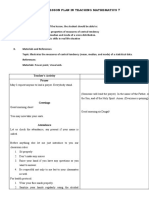0% found this document useful (0 votes)
31 views4 pagesPython Log File Management in Full Detail - 1
Python log file management involves configuring and maintaining logging using the built-in logging module, which includes loggers, handlers, formatters, and filters. Key practices include setting up logging early, using module-level loggers, and implementing log rotation to manage file sizes. Advanced features allow for custom configurations and integration with external tools for monitoring and analysis.
Uploaded by
cotago8453Copyright
© © All Rights Reserved
We take content rights seriously. If you suspect this is your content, claim it here.
Available Formats
Download as PDF, TXT or read online on Scribd
0% found this document useful (0 votes)
31 views4 pagesPython Log File Management in Full Detail - 1
Python log file management involves configuring and maintaining logging using the built-in logging module, which includes loggers, handlers, formatters, and filters. Key practices include setting up logging early, using module-level loggers, and implementing log rotation to manage file sizes. Advanced features allow for custom configurations and integration with external tools for monitoring and analysis.
Uploaded by
cotago8453Copyright
© © All Rights Reserved
We take content rights seriously. If you suspect this is your content, claim it here.
Available Formats
Download as PDF, TXT or read online on Scribd
/ 4







